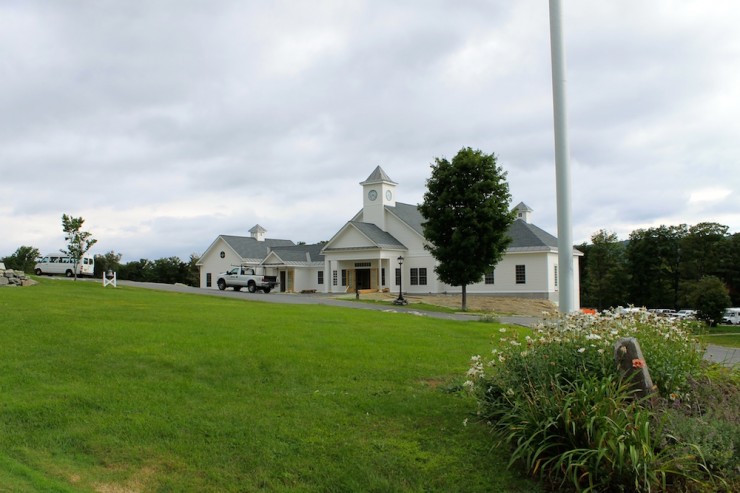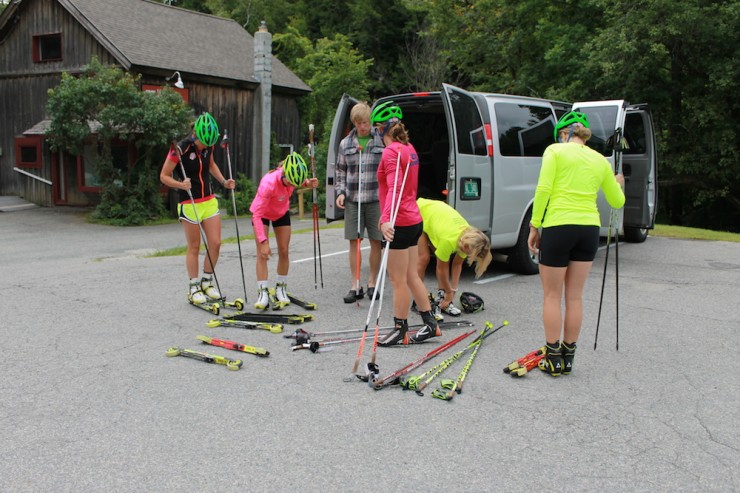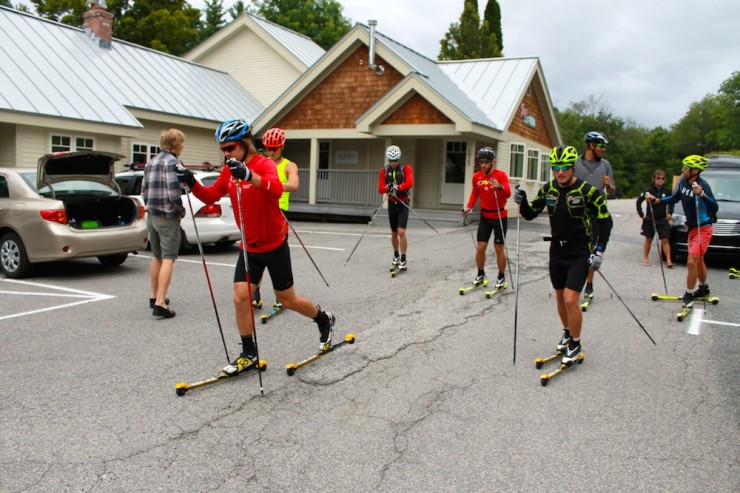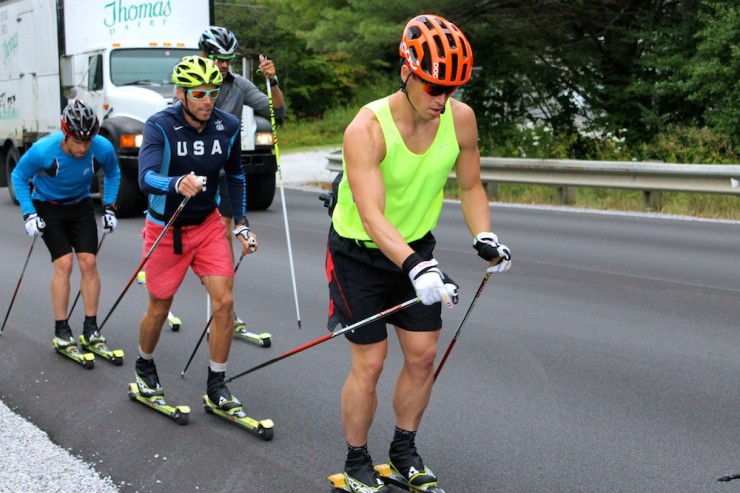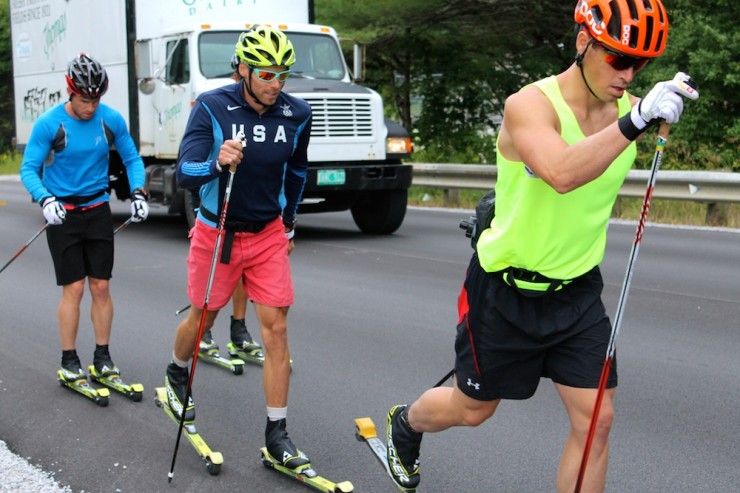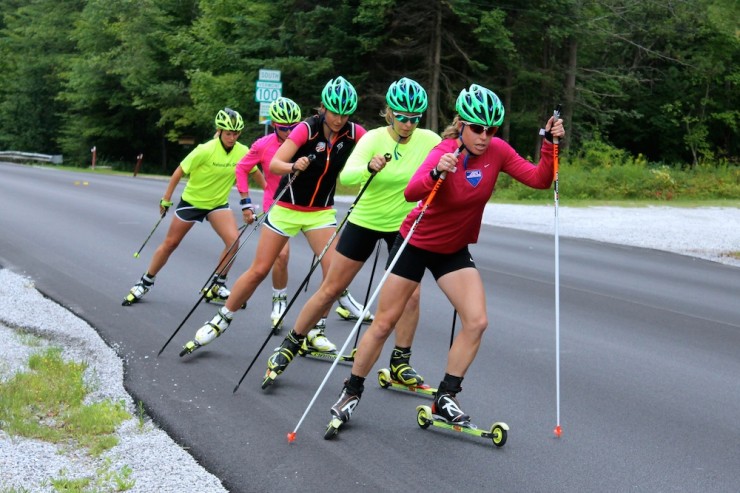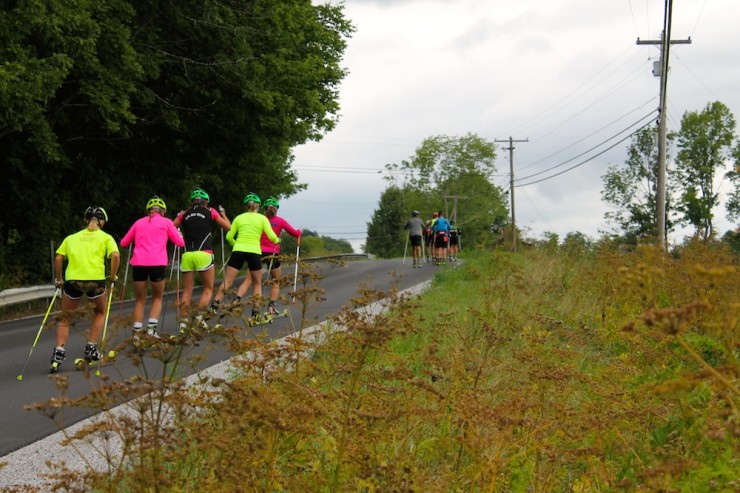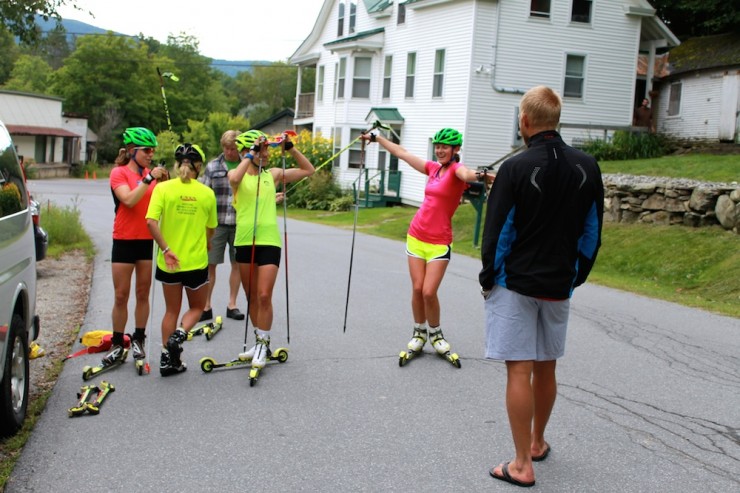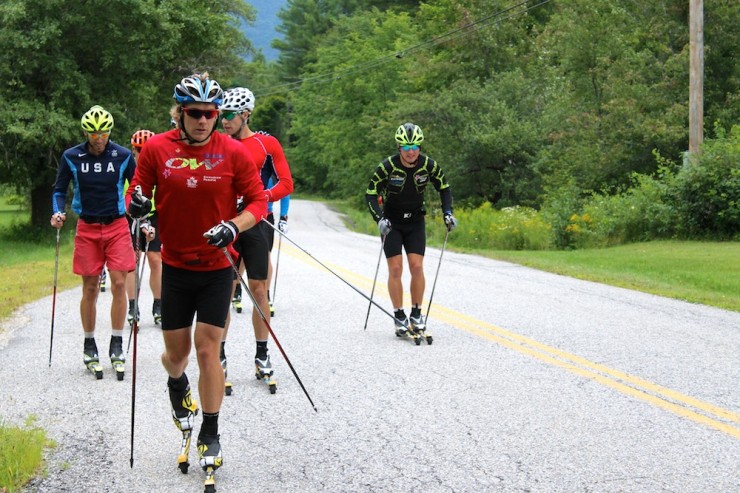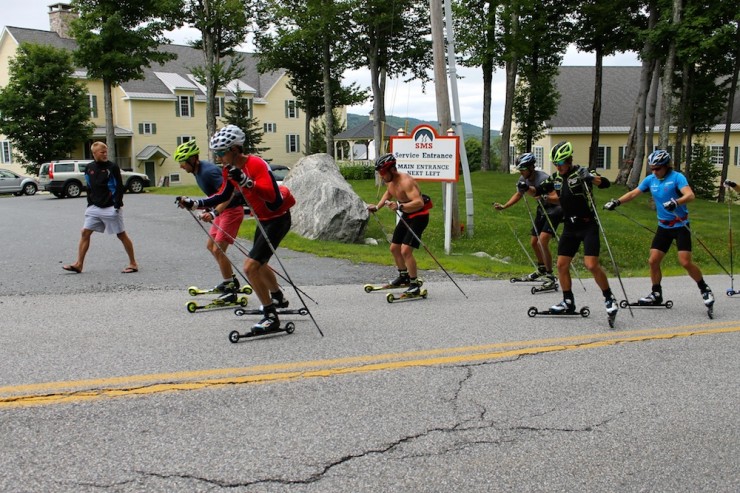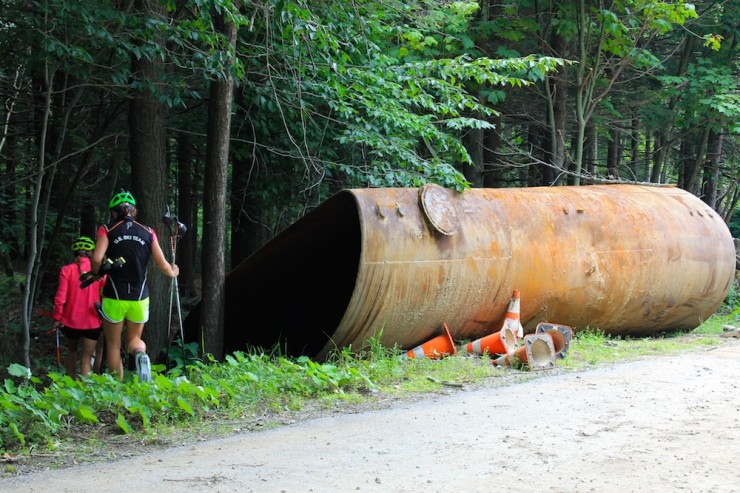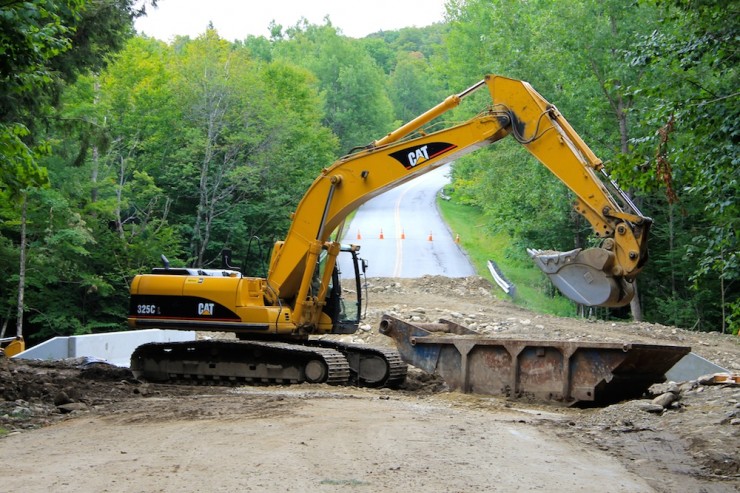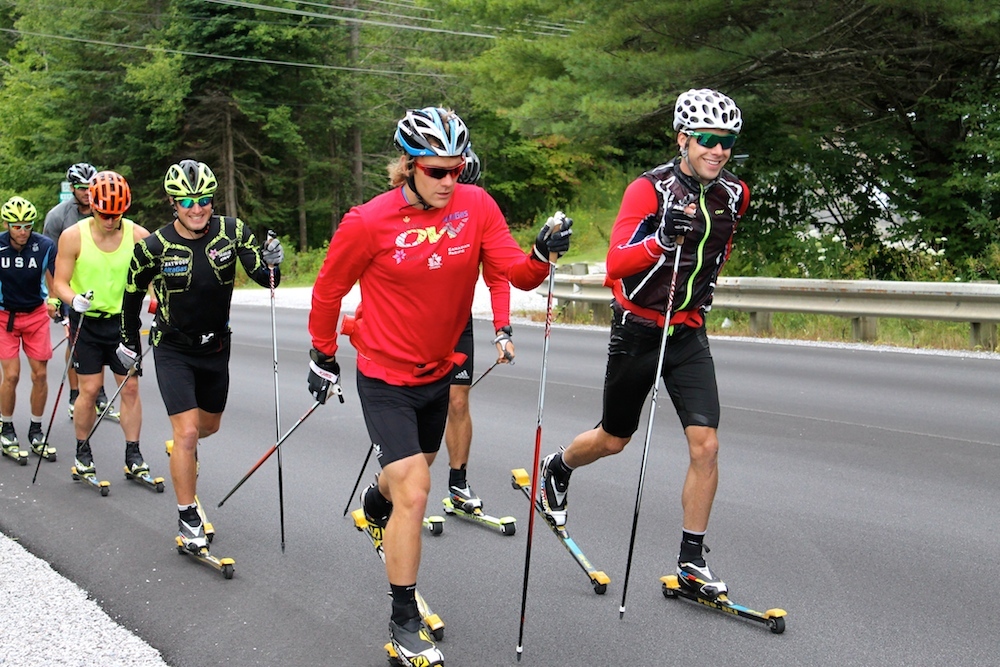
Canadians Alex Harvey (r), Devon Kershaw (front left) lead six other individuals, which includes Ivan Babikov (third from l), Kris Freeman (second from l) and Andy Newell (l), throughout a combi more than-distance rollerski on Aug. 15 near Stratton, Vt.
STRATTON, Vt. — When Tor-Arne Hetland thought of the U.S., his mind went to places he had been prior to, like New York City and Park City, Utah.
Stratton — a little town in southern Vermont with approximately 200 yr-round residents (not including the personal ski college near the height of the land) — was a shock, but Hetland figured if Andy Newell grew up training there, it had to be really worth visiting.
Canada’s newest Planet Cup coach and his 4-guy team of Ivan Babikov, Devon Kershaw, Alex Harvey, and Lenny Valjas ventured to the land unknown in early August for a sea-level, dryland intensity camp with the Stratton Mountain College (SMS) T2 Staff. They rented a home in Stratton and brought a bodily therapist along, and let Newell, an SMST2 skier and longtime U.S. Ski Crew (USST) member, demonstrate them all around.
Newell, of close by Shaftsbury, Vt., picked the rollerski routes and joined the Canadians for about half of their routines in the course of their two-week remain, as did fellow USST and SMST2 skier Simi Hamilton.
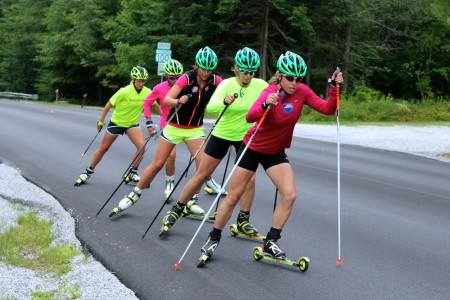
APU’s Rosie Brennan leads Stratton skiers Anne Hart (second from r), Annie Pokorny (c), Sophie Caldwell (second from l), and Jessie Diggins (l), during an over-distance, combi rollerski in Stratton, Vt.
Stratton’s new head coach in his third month with the crew, Patrick O’Brien stated the Canadians have been a welcome addition although most of his crew was instruction collectively, two weeks prior to the USST education camp in Lake Placid, N.Y.
Hetland and Canada’s Globe Cup assistant coach Louis Bouchard, who drove five hours down from Quebec City, came with two vans — making logistics somewhat easier for supporting eight guys for the duration of a offered work out. On Aug. 15, they did a three-hour, more than-distance, combi rollerski (mimicking a skiathlon), looping about hilly backroads.
“It’s been really great doing work with Tor-Arne and Louis,” O’Brien said. “As a young coach, I’ve been choosing their brains … They’ve been genuinely accommodating.”
Not all the workouts lined up. The Canadians, with a fifth athlete in Raphaël Couturier of the Pierre-Harvey Education Centre (where Bouchard is head coach), typically centered on substantial-intensity (Degree four-5) rollerskiing in the course of the camp. The quantity of hours they wished to put in did not always match those of Newell, Hamilton and Ben Saxton on the T2 Crew, O’Brien explained.
“Kind of our go-to is threshold and speeds with some L4,” O’Brien said.
Newell had been scaling back the sum of L4 workout routines this summertime and doing longer exercises to boost volume, he added. Plus, Newell and Hamilton not too long ago returned from the USST camp in Alaska.
For the duration of the Canadians’ camp in Stratton, O’Brien also had five female athletes to coordinate exercises for: Jessie Diggins, Sophie Caldwell, Erika Flowers, Anne Hart, and Annie Pokorny.
The crew from north of the border originally wished to hold their very own camp in Lake Placid at the recommendation of U.S. head coach Chris Grover. When they couldn’t find a property to rent in August, they turned their focus to Vermont at the suggestion of Grover and Justin Wadsworth, Canada’s other Globe Cup and National Team head coach.
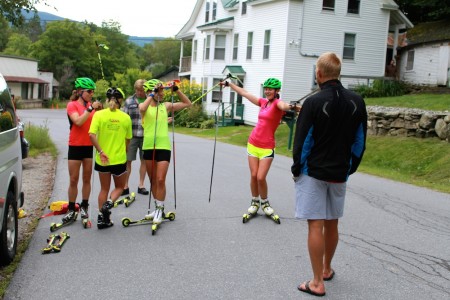
Canadian Globe Cup Group coach Tor-Arne Hetland (r) talks with the SMST2 Group during a water stop on its above-distance rollerski session on Aug. 15 close to Stratton, Vt.
“Londonderry, Brattleboro,” Hetland read through out loud from street indications along the rollerski route. Not considerably imagination those English settlers had, he chuckled.
No, not in New England, but weren’t these 18th-century buildings neat? A lot more like cute by his requirements, considering Norway was 900 many years older.
Irrespective, Stratton had one thing he wanted to see in person.
“I was considering, Andy Newell can train right here for many years so … that’s the cause we are here,” mentioned Hetland, an Olympic gold medalist who coached the Swiss national staff with his wife from 2010-2014. He and his wife, Guri Hetland, currently dwell in Davos, Switzerland.
Another plus: Stratton’s near-sea-level altitude with a reduced point all around one,900 feet (580 meters). The Canadians desired to train a lot and test their limits, so recovery occasions needed to be shorter, Hetland explained. In mid-October, they’ll head to Park City for their yearly altitude camp with less intensity, and they previously received together as a group in Canmore, Alberta, and also in Bend, Ore.
Back when they have been preparing their late-summer time camp, they ruled a number of locations out. Their normal quit in New Zealand for real skiing at the Snow Farm couldn’t occur since of Cross Country Canada’s budget cuts. Whistler, British Columbia, was a probability, but it wasn’t fantastic for rollerskiing, Hetland stated. Then they couldn’t find a spot to keep in Lake Placid.
But Newell, Hamilton and their SMST2 teammates: “We can use [them],” Hetland said.
“The U.S. and Canada have wonderful skiers, but they are alone,” he explained. “[That’s the] biggest difference to Russia and Norway.”
“Anytime you can make the group bigger without having sacrificing good quality, it’s fantastic,” O’Brien started, noting the high-caliber of the Canadians. “These guys are really fast.”
An hour and 30 minutes in, eight males — Newell, Hamilton, Babikov, Kershaw, Harvey, Valjas, Couturier, and Kris Freeman of Waterville, N.H. — clicked out of their bindings and switched from traditional to skate. Hetland and Bouchard had parked their two vans on the side of the road and very carefully laid out each athletes’ gear a couple of minutes just before.
4 months into his new position with the team, Hetland was nonetheless getting to know them. He remembers his parents’ 1st impression of the Canadians, obtaining only observed them on Tv.
“My dad and mom, who by no means met them, mentioned that will be good,” Hetland mentioned.
Just put, they appeared like they liked each and every other, and having worked with them for the last couple of months, Hetland could attest to that.
The essential to their chemistry more than the years hasn’t been a fluke: consistency in coaching partners and coaches has been a key factor, Hetland stated. For instance, he linked Harvey’s accomplishment to his longtime coach, Bouchard.
As for the alterations he’s instilled within the team, Hetland mentioned there is no one secret.
“The perform above a extended time is important, and also for the athletes to hear the identical suggestions about approach,” he explained. “I’m saying it a diverse way … anything old, but in a new way.”

Andy Newell (second from l) and Alex Harvey (r) lead an above-distance rollerski past the Stratton Mountain School even though Canadian coach Tor-Arne Hetland (l) checks in.
Not far behind the men, five girls — Alaska Pacific University’s Rosie Brennan in location of Flowers — switched to skate (Flowers was helping the Stratton junior camp that morning). Three of them — Caldwell, Hart and Pokorny — logged three hrs for their longest rollerski of the season.
Soon after picking their way by means of the woods to bypass a culvert-development site on their go-to rollerski street, appropriately named Mountain Road, they ended in Stratton’s town center, a quiet intersection with a couple municipal buildings.
“26.25 miles,” Caldwell read through off her GPS observe. “We just rollerskied a marathon!”
Later on this month, after the USST camp in Lake Placid, the SMST2 Group programs to do its yearly a hundred-kilometer (62-mile) rollerski to increase cash for travel expenses for the upcoming season.
“I genuinely appreciate watching and supporting these guys in instruction sessions,” mentioned O’Brien, a Stratton alumnus who raced for the Craftsbury Green Racing Project until finally this spring.
Now he’s creating education ideas for Hart, Pokorny, Flowers, and Saxton. The rest of the T2 skiers are on the USST, and O’Brien collaborates with their coaches to make positive they are on target.
“I’m as significantly a facilitator as I am a club coach,” O’Brien mentioned. “It’s type of like placing pieces of a puzzle with each other.”

